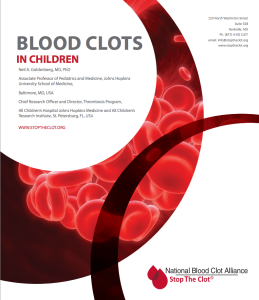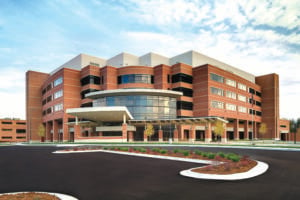What are “DVT,” “PE,” and “VTE” and how common are they in children?
Definitions:
- Deep vein thrombosis or DVT: A blood clot in your deep veins.
- Pulmonary embolism or PE: A blood clot in your lungs.
- Venous thromboembolism or VTE: The term that members of your health care team use to refer to both DVT and PE together.
- Blood clot: The way most people outside the medical field describe VTE.
- Pediatric hematologist: A type of doctor specially trained to treat children’s blood disorders.
Blood clots can develop in the deep veins that carry blood back to the heart from your arms or legs. They can also develop in other deep veins, including those that carry blood back to the heart from your head and neck, or the organs in your abdomen (belly). This is called deep vein thrombosis, or “DVT.” Blood clots can also develop in the blood vessels of your lungs, or travel to your lungs from deep veins in your body, where they had originally formed. This is called pulmonary embolism, “PE.”
DVT and PE can happen at any age. Although they happen more commonly in adults, they can also happen in children. About 1 in 10,000 children get DVT or PE, including as many as 1 in 200 hospitalized children. This resource on blood clots in children is designed for use by patients younger than 21 years old, their families, and their health care providers. In this resource, we review the causes, signs and symptoms, diagnosis, treatment, and long-term effects of DVT/PE. We also explain the importance of a team approach for children with DVT/PE, and we recommend that this team should include a pediatric (child-focused) hematologist (blood doctor) who has experience in taking care of children who have DVT/PE. Although some of the information also applies to clots in large arteries, the focus is DVT/PE.
Neil A. Goldenberg, MD, PhD
Professor of Pediatrics and Medicine, Johns Hopkins University School of Medicine,
Baltimore, MD, USA
Founding Director, Pediatric Thrombosis & Stroke Programs
Johns Hopkins All Children’s Hospital
St. Petersburg, FL, USA
Updated: September 2024





